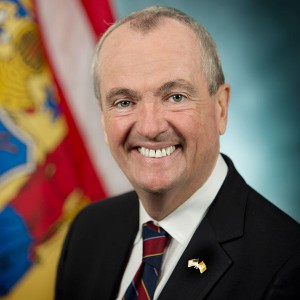
Washington, D.C., March 7 –During the 2019 National Governors’ Association (NGA) winter meeting, Gov. Phil Murphy of New Jersey spoke about his commitment to serve “the entire disability community.” In New Jersey, he added, “we rise or fall as one family.”
Gov. Murphy pointed to his own cabinet, which includes a newly created Office of the Ombudsman for Individuals with Intellectual or Developmental Disabilities and Their Families, as a testament to his commitment to serve New Jerseyans with disabilities and vowed, “we’ve got a lot of elements in our budget” that will positively impact people with disabilities.
The newly published 2018 Annual Disability Statistics Compendium shows there are 428,932 working-age (ages 18-64) people with disabilities living in New Jersey. Out of that number, only 161,729 have jobs. That means the Garden State has a 37.7 disability employment rate. Further analysis by the nonpartisan advocacy group RespectAbility shows that New Jersey ranks 28th out of the 50 states for disability employment. More than 2,100 people with disabilities entered New Jersey’s workforce last year.
“Our nation was founded on the principle that anyone who works hard should be able to get ahead in life,” said Hon. Steve Bartlett, current Chairman of RespectAbility, who co-authored the Americans with Disabilities Act when he was in Congress. “People with disabilities deserve the opportunity to earn an income and achieve independence, just like anyone else.”
In a radio interview with New Jersey 101.5, RespectAbility’s Policy Director Philip Kahn-Pauli noted, “New Jersey is now at a point where it is outperforming much bigger states, like California and Florida.” One area where New Jersey has set itself apart is when it comes to serving students with disabilities. College student Rachel Bowers is living with an intellectual disability and was worried about making the transition to community college. Bowers was able to receive help from a two-year non-degree program that was designed for students who have intellectual disabilities called the Turning Point program. Each student is given a mentor that assists them in finding their way around the campus as well as helping with homework.
New Jersey also recently expanded temporary disability insurance as part of a new paid family leave program signed into law last month. “This type of insurance is crucial to help people who acquire a disability through accident, illness or aging to stay connected to the workforce,” said Kahn-Pauli.
New Jersey has been an “Employment First” state since 2012, meaning that systems are aligned to support employment opportunities for youth with disabilities. However, Gov. Murphy made it clear at the NGA that “good is not good enough.”
A National Issue
Beyond New Jersey, how is the workforce changing for people with disabilities? What is driving these changes? The answer is simple. According to Vincenzo Piscopo of the Coca-Cola Company: “People with disabilities bring a unique skill set that it is very valuable for companies.” He went on to add, “As it relates to employment and competitiveness in the workplace, we have to stop thinking of disability as a liability and start thinking of it as an asset.”
Brand-name companies such as JP Morgan Chase, Coca-Cola, Ernst & Young, IBM, Walgreen’s, Starbucks, CVS and Microsoft show people with disabilities are successful employees. These companies also know that these workers improve the bottom line. “People with disabilities bring unique characteristics and talents to the workplace,” said RespectAbility President Jennifer Laszlo Mizrahi. “Hiring people with disabilities is a win-win-win for employers, people with disabilities and consumers alike.”
As more companies hire employees with disabilities, conversations are shifting to focus on inclusion. “Disability inclusion is no longer about automatic doors, curb cuts, ramps, and legislation,” says Jim Sinocchi, Head of the Office of Disability Inclusion at JP Morgan Chase. “Today, the new era of disability inclusion is about “assimilation” – hiring professionals with disabilities into the robust culture of the firm.”
According to the Census Bureau, there are more than 56 million Americans living with a disability. Disabilities include visible conditions such as spinal cord injuries, visual impairments or hearing loss and invisible disabilities such as learning disabilities, mental health or Autism.
An Election Issue
Voter research conducted by RespectAbility shows how disability issues connect to all aspects of American life. “Fully three-quarters of likely voters either have a disability themselves or have a family member or a close friend with disabilities,” said former Representative and Dallas Mayor Steve Bartlett. “People with disabilities are a politically active, swing vote, and candidates should take note of important issues they care about.”
As 2019 moves into 2020 and the political campaign season heats up, continuing job growth for people with disabilities will be a crucial indicator of the health of the American economy.
Be First to Comment